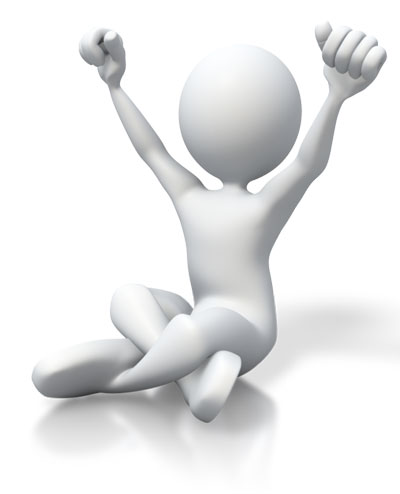 This third part of my series on constructive pain reduction provides a quick overview of some of my favorite self-managed care techniques for pain management that I like to emphasize within my coaching programs.
This third part of my series on constructive pain reduction provides a quick overview of some of my favorite self-managed care techniques for pain management that I like to emphasize within my coaching programs.
These techniques differ from the lifestyle modifications, since most of these practices are not already part of a client’s life, but can be easily added for maximum benefit with minimal effort. Best of all, virtually every client absolutely loves these practices, making self-improvement a fun and enriching process:
Meditation is an inherent part of all of my coaching programs and is one of the most rewarding techniques when considering the benefits gained for the time and effort invested. Meditation should be performed at least once every day, with twice being much more effective for building quality skills.
Guided imagery is a necessary part of this coaching program and provides tremendous satisfaction for clients. Self-guided imagery is proven to increase confidence, improve feelings of security, decrease stress, promote relaxation and even foster the setting and successful achievement of life goals. Guided imagery can be used with meditation or can be a fast-fix for moments of acute stress in life.
Progressive muscle relaxation is a great component of active meditation. Learning to focus the mind on the sensation of a specific area of the body can help to minimize tension and actually transform pain signals into other types of neurological perceptions.
Amateur massage / Self-massage is easy to do and is amazing in its efficacy. If you have someone who can learn to massage you, you will truly be able to relax and enjoy one of life’s best experiences. Better still, you can return the favor and build intimacy and bonding between the two of you, while giving something positive back to another person. Self massage does not have to be formal. In fact, some of the best self massage consists of super simple techniques that have been proven to work wonders for the body and mind. You can soothe yourself just by touching your hands to your body in a compassionate way. Self-touch activates the production and release of oxytocin; the hormone that promotes love and bonding.
Relaxation techniques include our use of deep breathing, as well as many more that can be studied and learned in a matter of hours. If stress is a big problem for you, and you have trouble finding peace in a quiet mind, then concentrating on relaxation is sure to pay considerable dividends for pain relief and overall health.
Self-hypnosis can be performed using audio, video and subliminal products that can help to implant and reinforce positive suggestions for improving life. I love the simple use of affirmations and have therefore made them a basic part of my coaching programs. Simply repeating your affirmations each and every day is proven to grow the seeds of your desires into reality. You can actualize your goals simply by thinking towards them on a daily basis.
TENS is a nonpharmaceutical pain management system that can be administered at home or anywhere. The treatment uses small electrical charges to disrupt the transmission and reception of pain messages transdermally. TENS works through small electrode pads that are attached to the skin in the painful region. The feeling is relaxing to some, while it may be irritating to others. TENS works far better for some types of pain than for others. It is recommended to speak to your doctor before trying TENS, since some health conditions contraindicate its application. For patients who are cleared for treatment, a small investment can purchase an effective method of pain management that can be used virtually anywhere and anytime.
Heat and ice are the ultimate self-care modalities for treating many of life’s ills. Both heat and ice can ameliorate pain and ice can also effectively reduce inflammation. Heat therapy can be applied with a heating pad, hot wet towel or using a hot shower, Jacuzzi or tub. Ice therapy can be applied using actual ice wrapped in a towel, frozen gel packs or a cold water bath or shower. If you have never tried a comprehensive program of heating and/or icing, you will be surprised at its efficacy.
Topical medications can simulate heat or ice therapy and can also provide soothing relief for many different types of pain conditions. Topical rubs, salves and balms are best utilized in combination with massage or self-massage. These can be very effective and might even rival the benefits of many powerful pharmaceutical products, without the same significant risk factors. Pain patches also qualify, but if these involve transdermal introduction of prescription drugs, there might be some risks to consider and discuss with your physician first.
Cognitive-behavioral therapy can take many diverse forms and should be administered by a trained mental health professional. Once the patient learns the techniques, these can be easily incorporated into self-managed care plans. Some cognitive and psychoemotional therapies can be studied and learned independently. Journaling is easy to master and extremely effective for providing substantial benefits to mind and body.
Knowledge therapy is also another fantastic self-managed care practice that can actually cure many pain conditions by resolving their causative origin in the mind.
Distraction and coping mechanisms can also be taught by a mental health care provider and are often included in a successful coaching program. Different ways to view pain can help many patients to find comfort, despite the ravages of chronic symptoms. Some of the more popular forms of distraction include: counting, pain movement and transference, age progression and regression, mental analgesia, virtual anesthesia, sensory splitting, pain dissociation and altered anatomical focus.
Exercise therapy is one of the best activities for chronic pain and illness sufferers to undertake. The human body is inherently designed to crave and benefit from exercise, while leading a sedentary lifestyle is known to produce serious negative health effects. It is vital to get some form of exercise each and every day. To accomplish this goal, it is best to consult with your physical therapist first to be sure that you pace yourself and only pursue recommended pastimes. Hiring a fitness trainer or physical therapist can help patients with the worst physicality issues to start slowly and achieve steady results towards better health. For people who think that their pain or illness prevents active lifestyle participation, I suggest considering alternative methods of exercise treatment that can be enjoyed by virtually everyone. Some of the best of these include swimming, walking, yoga and tai chi. Personally, I can say that swimming has virtually saved my life. I owe so much of my own physical improvement to my daily devotion to time spent in the pool.
In the final part of my constructive pain management series, I will detail some of the many professionally-applied techniques that can reduce the perception of pain, without the risks of more traditional drug-based remedies.



